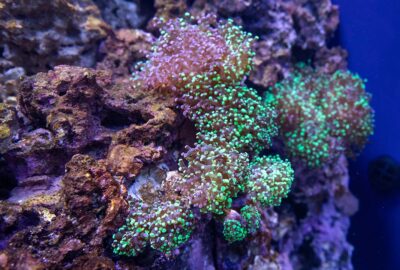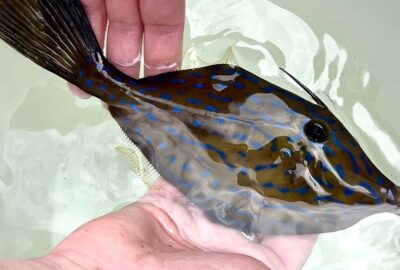Raising Fish Sustainably: Q&A with Barbara Bailey
By New England Aquarium on Monday, October 31, 2022

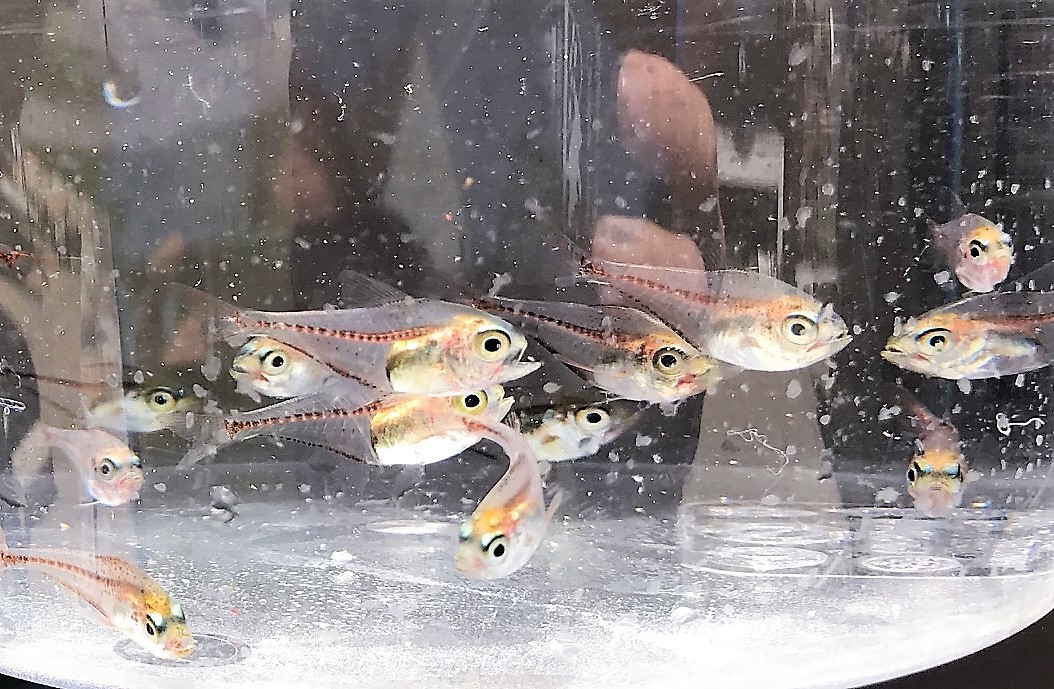
The New England Aquarium is one of five institutions to have received a $750,000 NOAA Sea Grant to support our innovative sustainable aquaculture programs—collecting eggs, rearing species in-house, and sharing our successes with other aquariums across the country. Since 2008, we’ve partnered with scientists at Roger Williams University to raise 17 different species of fish sustainably for our Giant Ocean Tank and surrounding exhibits. Of the more than 1,000 animals in the Giant Ocean Tank, more than 500 individuals were raised in the program, and we’re collecting more eggs in the Indo-Pacific Reef exhibit to continue the sustainable breeding effort.
Want to know more? Here, Curator of Husbandry and Sustainability Barbara Bailey answers questions about the program’s history, what it takes to raise fish sustainably, and how this grant sets up sustainable aquaculture for future success.
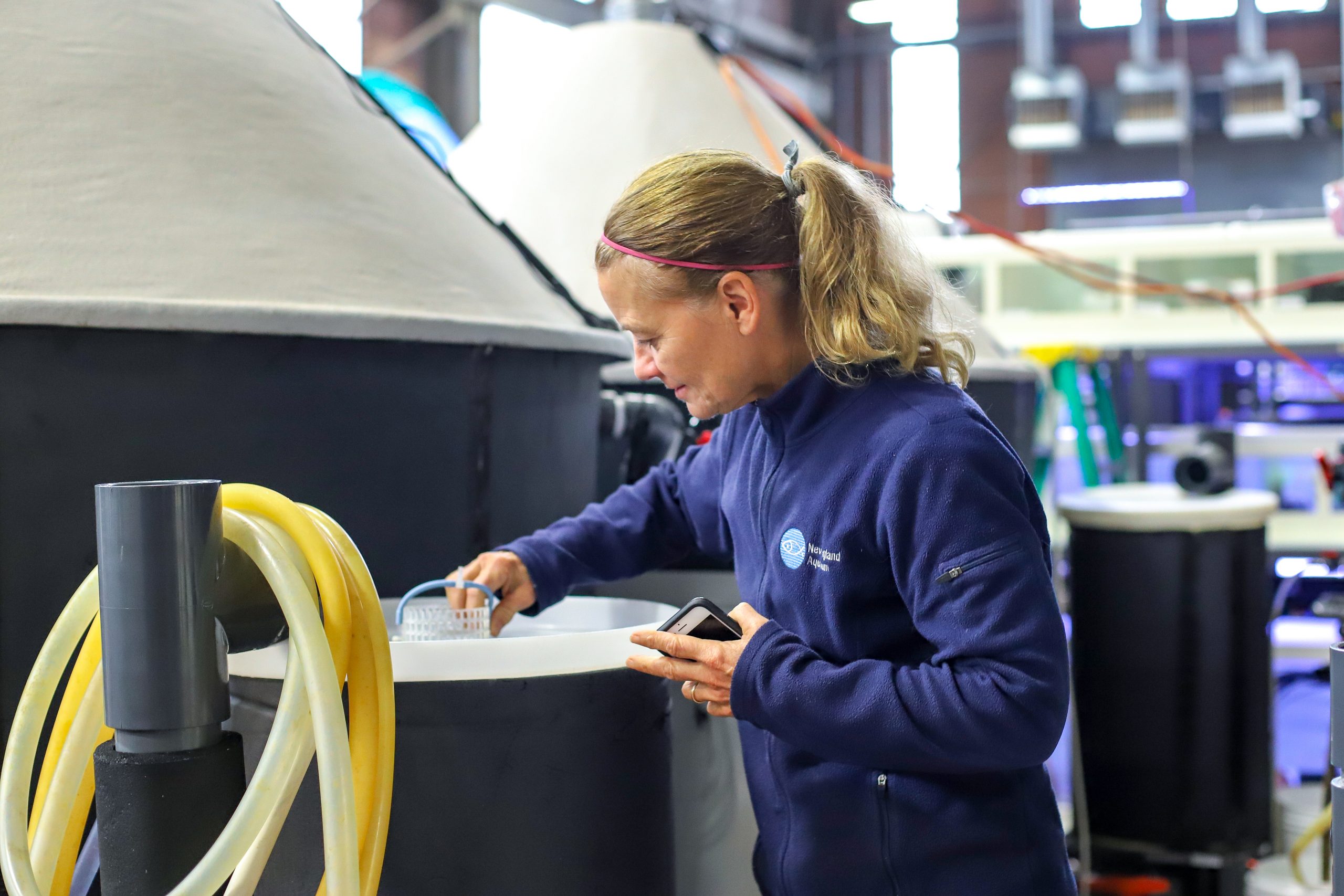
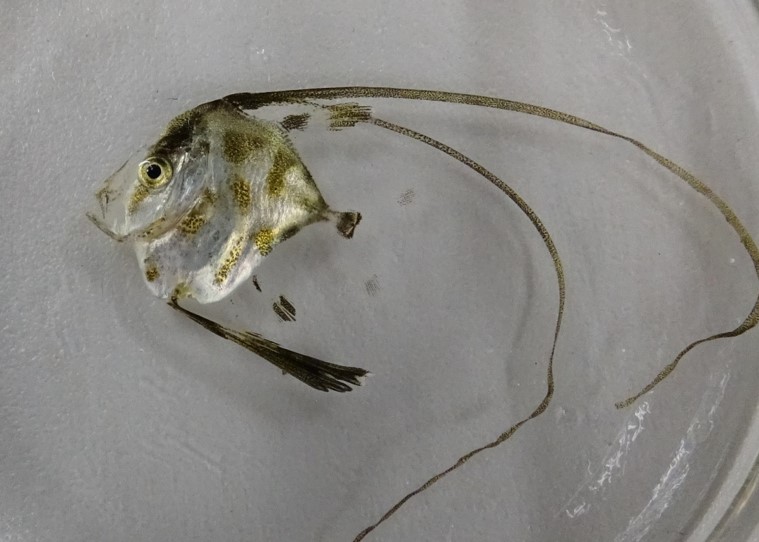
What is the the history of the sustainable breeding program and the partnership with Roger Williams University?
Like many public aquaria, the Aquarium has been interested in raising larval fish for many years. In the early years, it was tinkering behind the scenes with limited resources. In fact, the Aquarium won the Edward Bean award in 1978 for the propagation of the striped burrfish. The Aquarium and Roger Williams University (RWU) started collaborating on larval efforts in 2008. Between 2012–2016, the two institutions partnered on a grant from the Institute of Museum and Library Sciences (IMLS) to train 51 aquarists from 23 institutions to collect eggs, rear larvae, and work with specialized breeding systems called MoLaRs (modular larval rearing systems). Workshops on live food and larval culturing were also developed as part of this grant. This initial partnership demonstrated the potential for an integrated breeding program.
What does “sustainable breeding” mean? What guidelines are you following, how do you ensure your practices are ethical, and why is that important?
Sustainable breeding is fulfilling current needs without compromising future needs and as well as balancing growth, environmental care, and well-being of communities.
This program supports sustainable collection strategies. We produce our own live foods in-house, we have the broodstock (or parents) in our Quincy Animal Care Center, and we raise the fish at either the Quincy facility or RWU. More than that, we use criteria to select the species we chose to raise in the program. We focus on status in the wild, acquisition methods, and animal welfare concerns—such as how fish tolerate collecting, handling, shipping, and quarantine—as well as longevity and collection planning. There are other ways to acquire fish ethically, responsibly, and sustainably, and larval breeding programs are one way to do this.
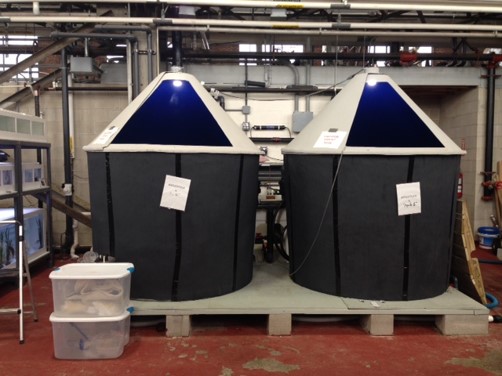
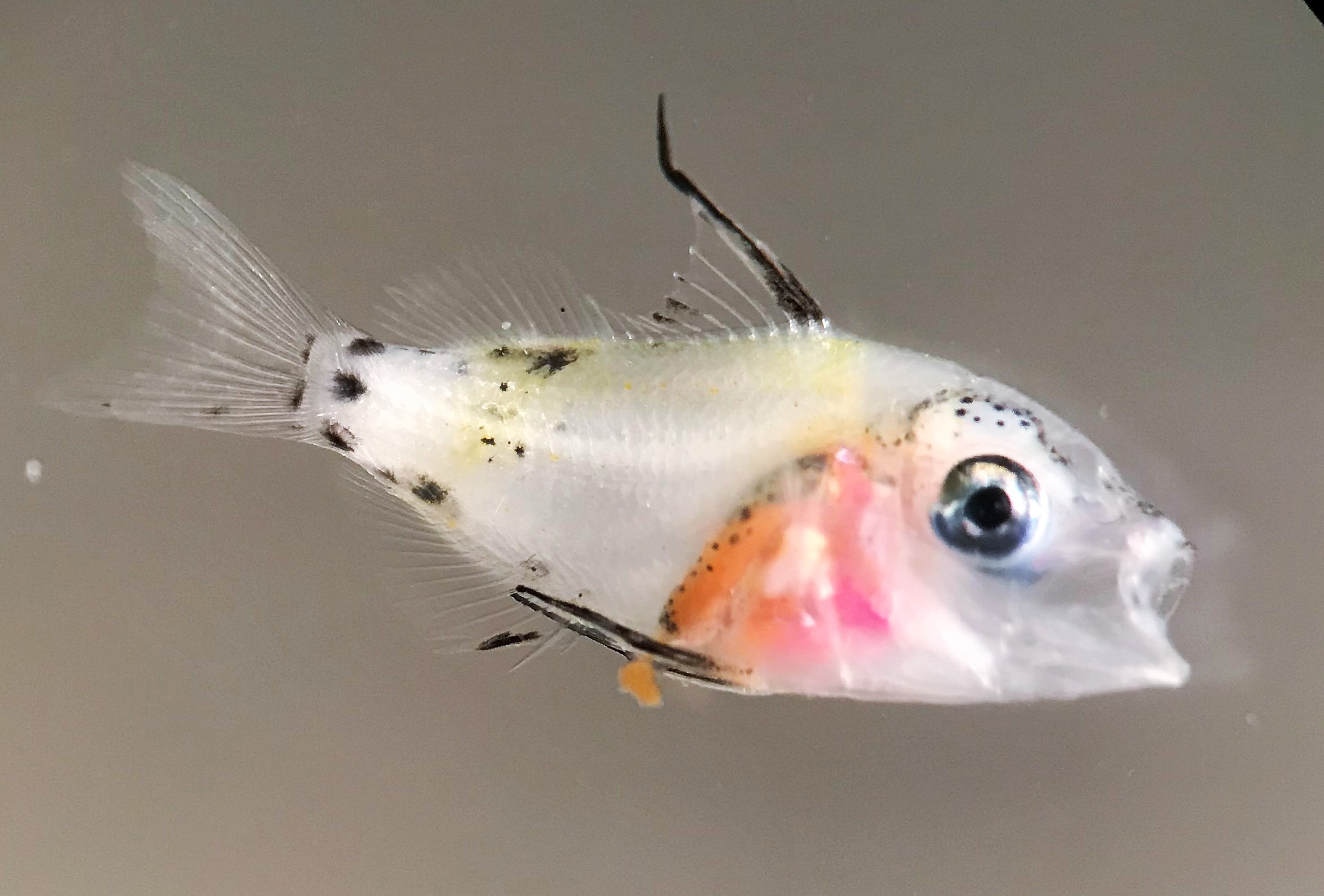
What has the team learned throughout this program? Are there recent successes you could speak to?
What we learned: It is meticulous and tedious work, and it can be frustrating at times. Record-keeping and documentation are critical to success. There can be many failures along the way and many variables that can be tweaked, but each time we get closer to the fish reaching settlement. And we can’t have success without healthy, reliable live food sources (you are what you eat).
One success has been our glassy sweepers. It was the first time the species was ever bred from egg to adult, done in partnership with RWU in 2017. Glassy sweepers are more sensitive to being collected, quarantined, and transported, and raising them in-house can be better for their well-being.
Another success is the creation of the Association of Zoos and Aquariums (AZA) Aquatic Collections Sustainability Larval Production and Distribution pilot program in 2022 to test the cooperative model among AZA members. Through this program, participating AZA member aquariums can share costs and make sustainable aquacultured fish more accessible. It was a big step forward in growing the program among other AZA institutions.
Can you explain the significance of the NOAA Sea Grant for the sustainable breeding program?
The goal of this grant is to continue to build a network of public aquariums working together to increase the knowledge base and expand aquaculture efforts of early-stage propagation and rearing of aquarium finfish. This grant will catalyze the work and build capacity at the five partner institutions and increase the awareness of aquaculture through exhibits and messaging to visitors and the public. Sharing our aquaculture guides as open-source materials will increase the potential of technology transfer in the industry and to non-partner public aquaria.
How will expanding this partnership benefit other aquariums? Is there potential for it to expand to other species of fish?
Building capacity and scaling efforts at the five grant institutions with act as a catalyst for building the network at other facilities–sharing knowledge, expertise, and experiences–broadening the knowledge and the reach of the Aquarium/RWU model. The expansion of species in the program is absolutely possible and a goal of the program.
Where do you hope to see this work in the next five to 10 years?
We want to continue to build the network of public aquariums contributing to sustainable collections, not only for their own exhibits but for the collective good–a cooperative or collaborative breeding program where resources are pooled and shared. We’ll be exploring the intersection between aquarium aquaculture (for exhibits) and commercial aquaculture (food) and sharing that with our visitors. We also hope to continue to make advancements on diet and nutrition for broodstock (parents) needed for healthy larval development and examine causes and develop solutions for deformities that can occur in some larval fish.
Where can Aquarium visitors see some of the fish that have been raised in-house?
Right now, there are 100 schooling lookdowns in the Giant Ocean Tank, all of which were reared at the Aquarium. There are also around 400 smallmouth grunts that are in the Giant Ocean Tank as well. It’s mesmerizing to watch them—a true representation of schooling behavior in this species that we can share with our visitors. They were all raised in the partnership between the Aquarium and RWU.
We also recently introduced Atlantic silversides into our Larval Fishes exhibit. These are another example of a fish that’s difficult to collect and is very sensitive to temperature changes and being transported. We feed nearly 12 pounds of silversides to our animals each day; successfully rearing them in-house means they could have potential as aquacultured, sustainable fish food.

